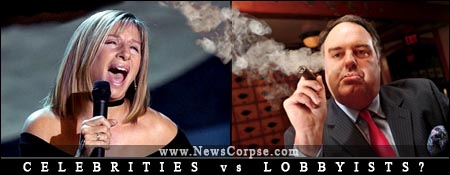At the Republican National Convention in Minnesota this month, there was an unprecedented assault on freedom of the press as dozens of journalists were arrested along with the protesters they were covering. Those arrested included members of local broadcast media, the Associated Press, and mainstream newspapers, along with alternative media and Internet news sites.
The actions of law enforcement in St. Paul were thoroughly unjustifiable and smacked of police state suppression of free speech. It is a black mark on the city’s reputation, and the fact that it was done with the cooperation of the Republican Party doesn’t say much for their commitment to the First Amendment either.
Today Mayor Chris Coleman of St. Paul announced that the city will decline to prosecute all misdemeanor charges against journalists arrested during the convention. While dropping these charges is the only acceptable course of action, Coleman still believes that the arrests were proper and in the interests of the community. He asserts that “the police did their duty in protecting public safety.” (Exactly who in the public did Coleman think the journalists were threatening?) Nonetheless, he heaps praise on himself for reversing the police on their arrest authority.
“This decision reflects the values we have in Saint Paul to protect and promote our First Amendment rights to freedom of the press. A journalist plays a special role in our democracy and that role is just too important to ignore.”
If this is an example of how St. Paul protects and promotes the First Amendment, it is a sad commentary on their understanding of the Constitution. Dropping these charges is not a demonstration of principle. It is merely a correction of prior misbehavior. And it does nothing to undo the damage caused by the detentions in the first place.
If the reason for arresting the journalists was to limit the free distribution of information from the convention site, and there is no other plausible reason, then their mission was accomplished. Reporters cannot post stories from jail. By releasing them after the event was concluded they were effectively silenced. Whatever news these reporters might have gathered and supplied to the public is forever lost.
Another deficiency in Mayor Coleman’s statement is language that calls into question who will be cleared and what defines a journalist:
“The decision will only affect people identified as journalists who face the misdemeanor charge. Recognizing the growing media profession in print, broadcast and the Internet, the city attorney’s office will use a broad definition and verification to identify journalists who were caught up in mass arrests during the convention.”
What these means is that any person that doesn’t meet the city’s definition of a journalist, or any journalist the city chooses to indict on charges higher than a misdemeanor, is exempt from this absolution. This interpretation directs the power back to the government and away from the Constitution. It would be far too easy to apply these vague rules arbitrarily in order to harass selected individuals whom the government dislikes.
If the city of St. Paul faces no consequences for their repressive tactics, then they and other government bodies will have a green light for future clampdowns on lawful, Constitutionally protected activities. Hopefully one or more of these journalists will file suits for false arrest and violations of their Constitutional rights. At this point the courts are one of the few remaining paths left to affirm the principle of a press that is unshackled from government control.
Also on the path are the ACLU and Free Press. They are both in hot pursuit of truth and justice in this affair. Feel free to help them out.








 Correspondent William La Jeunesse’s report only went into detail on earmarks requested by Barack Obama and Joe Biden. The story came complete with on-screen graphics to illustrate his points. But no numbers or graphics were provided for John McCain or Sarah Palin. This deliberately one-sided hit piece would be bad enough all by itself. Unfortunately, the worst part is revealed with a little further investigation. And it gets much, much worse.
Correspondent William La Jeunesse’s report only went into detail on earmarks requested by Barack Obama and Joe Biden. The story came complete with on-screen graphics to illustrate his points. But no numbers or graphics were provided for John McCain or Sarah Palin. This deliberately one-sided hit piece would be bad enough all by itself. Unfortunately, the worst part is revealed with a little further investigation. And it gets much, much worse.
